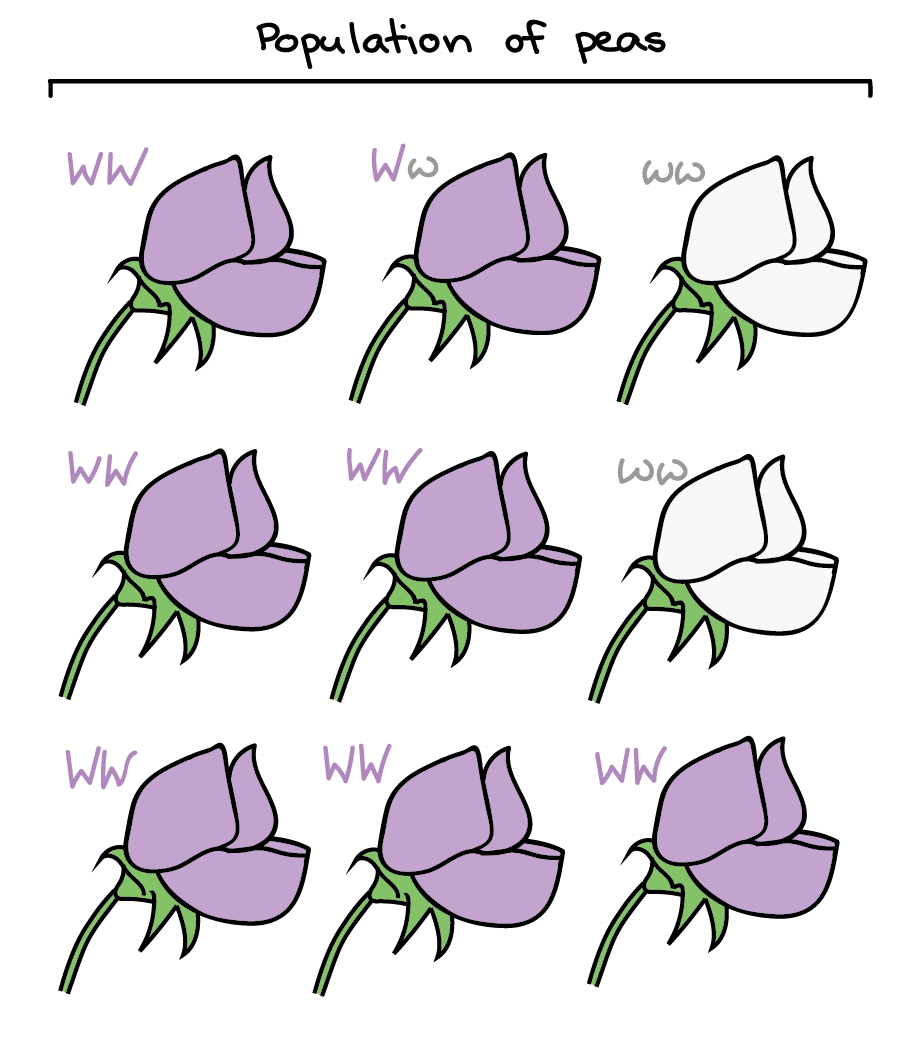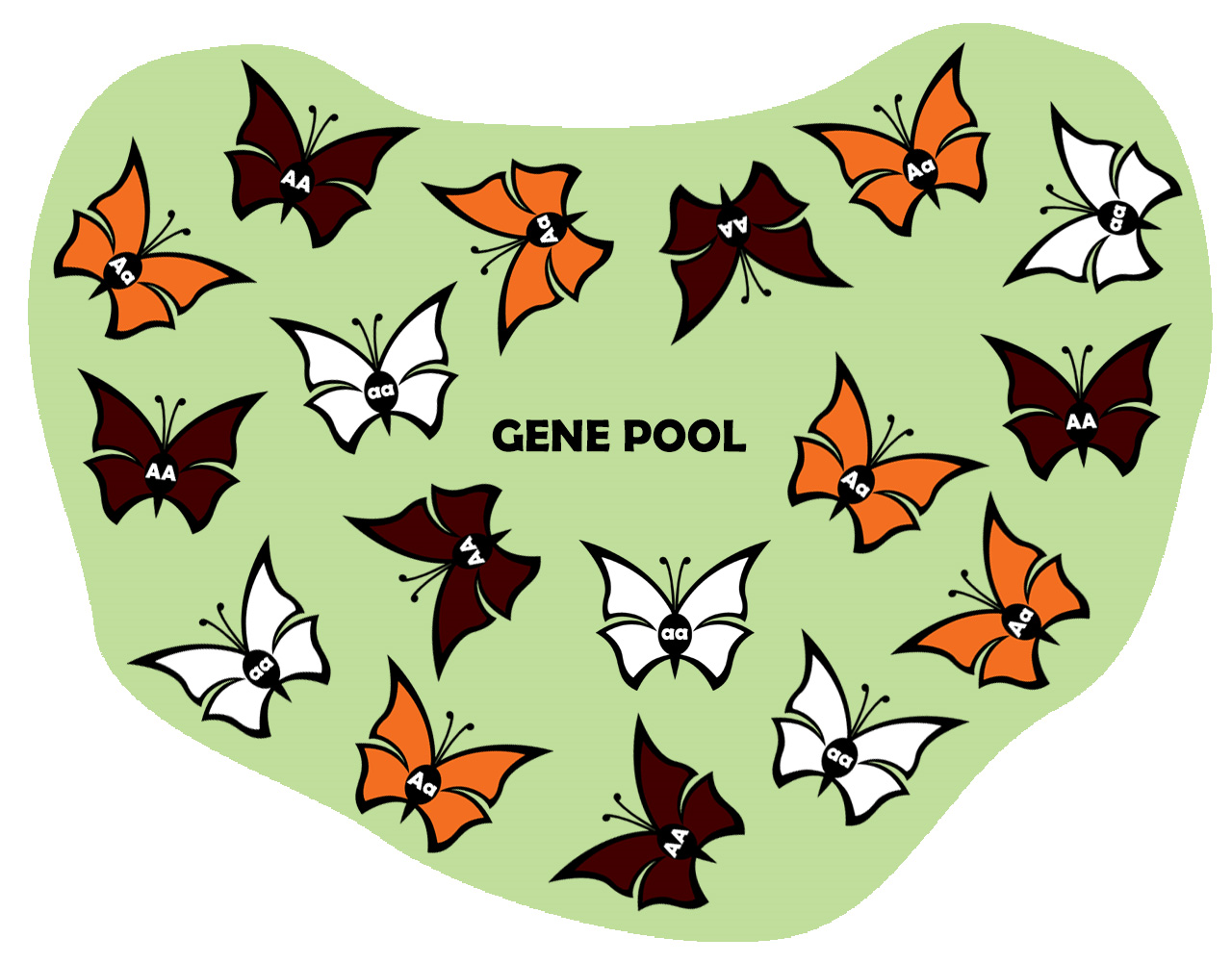Shownotes
Welcome to My AP Biology Thoughts podcast, my name is Shriya and I am your host for episode 5 called “Population Genetics: Central Dogma, Allele Frequency Equation and Gene Pools.” Today we will be discussing the definitions of all of those concepts as well as a few examples to go along with them. Then, we will connect all of that to the overarching topic of evolution. Hope you enjoy!
Segment 1: Introduction to Population Genetics: Central Dogma, Allele Frequency Equation and the Gene Pool
Introduce the episode topic
Include definitions and vocabulary
- Will be discussing the topic of population genetics which is the study of genetic variation within a population and looking into changes in the frequencies of genes and alleles in populations over time
- Natural selection is one of the most influential factors that can affect a population’s genetic composition
- Central dogma of biology is when the instructions contained in DNA are converted into a functional product, a phenotype
- DNA, contains the genes that determine who you are, and proteins determine the structure and function of all your cells
- It describes the two-step process, transcription and translation, of how information in genes flow into proteins, creating a string of amino acids called polypeptides
- The DNA has the information which is used by the RNA to make the proteins
- The Allele Frequency Equation: an allele is a version of a gene and a heritable unit that controls a particular feature of an organism
- The allele frequency refers to how often a particular allele appears in a population
- An equation called the Hardy-Weinberg equation is used to calculate the genetic variation in a population: p^2 + 2pq + q^2
- p^2 and q^2 are the allele frequencies of the homozygous recessive and homozygous dominant, and 2pq is the allele frequency of the heterozygous genotypes
- To get p and q individually, you calculate actual/total # of alleles
- With this knowledge, you are able to calculate the total allele frequencies using the equation p + q = 1
- The gene pool is calculated using the equation just mentioned, p + q = 1 since it is the sum of both allele frequencies
- A gene pool is the collection of different genes within an interbreeding population, and refers to its genetic diversity
- The larger the gene pool, the greater genetic diversity, and the better a population is able to withstand environmental challenges
Segment 2: Examples of Population Genetics
Have a natural transition into an example… no need to say “segment 2”
Provide detailed example(s) of your topic
- This first example is a depiction of the central dogma and the different processes at work from Khan Academy
- DNA directs the construction of the chain of amino acids through transcription, which is when the DNA sequence of a gene is copied to make an RNA molecule
- During the second process, translation, mRNA is decoded to specify the amino acids of the polypeptide chain
- Overall, information flows from DNA to RNA to a protein, and this directional flow is why it is the central dogma of molecular biology

- An example using pea plants demonstrates how to calculate the allele frequency of a population using the total number of alleles and fractions
- There are 9 pea plants, meaning 18 total alleles
- 6 of them are homozygous dominant (WW), 1 is heterozygous (Ww), and 2 are homozygous recessive (ww)
- To calculate p and q, set up fractions and convert them into percentages
- There are 13 copies of the W allele and 5 copies of the w allele, so the allele frequencies for each are 72% and 28% respectively
- If you notice, they add up to 1, or 100%

- To show a gene pool, here is a picture of butterflies of 3 different colors: orange, white, brown
- You can see the diversity in the population through the different allele combinations: AA (brown), Aa(orange), aa (white)
Segment 3: Digging Deeper into Population Genetics
How does this topic fit into the greater picture of evolution?
- The flow of information from DNA to a protein is the process of central dogma which relates to evolution because if a mutation arises out of this process, it creates a change in DNA
- This change causes changes in all aspects of that organisms’s life and increases genetic variation, contributing to evolution as a whole
- Also, through each protein made you can analyze similarities and differences between organisms to see if they are closely-related and where a divergence might have occurred, leading to evolution
- If a gene pool with a mix of alleles stayed the same, there would be very little genetic variation, but changes to the frequencies of alleles demonstrate evolution
- Microevolution reflects changes in DNA sequences and allele frequencies within a species over time and these changes may be due to mutations, which can introduce new alleles into a population
Thank you for listening to this episode of My AP Biology Thoughts. For more student-ran podcasts, make sure that you visit www.hvspn.com. Thanks for listening!